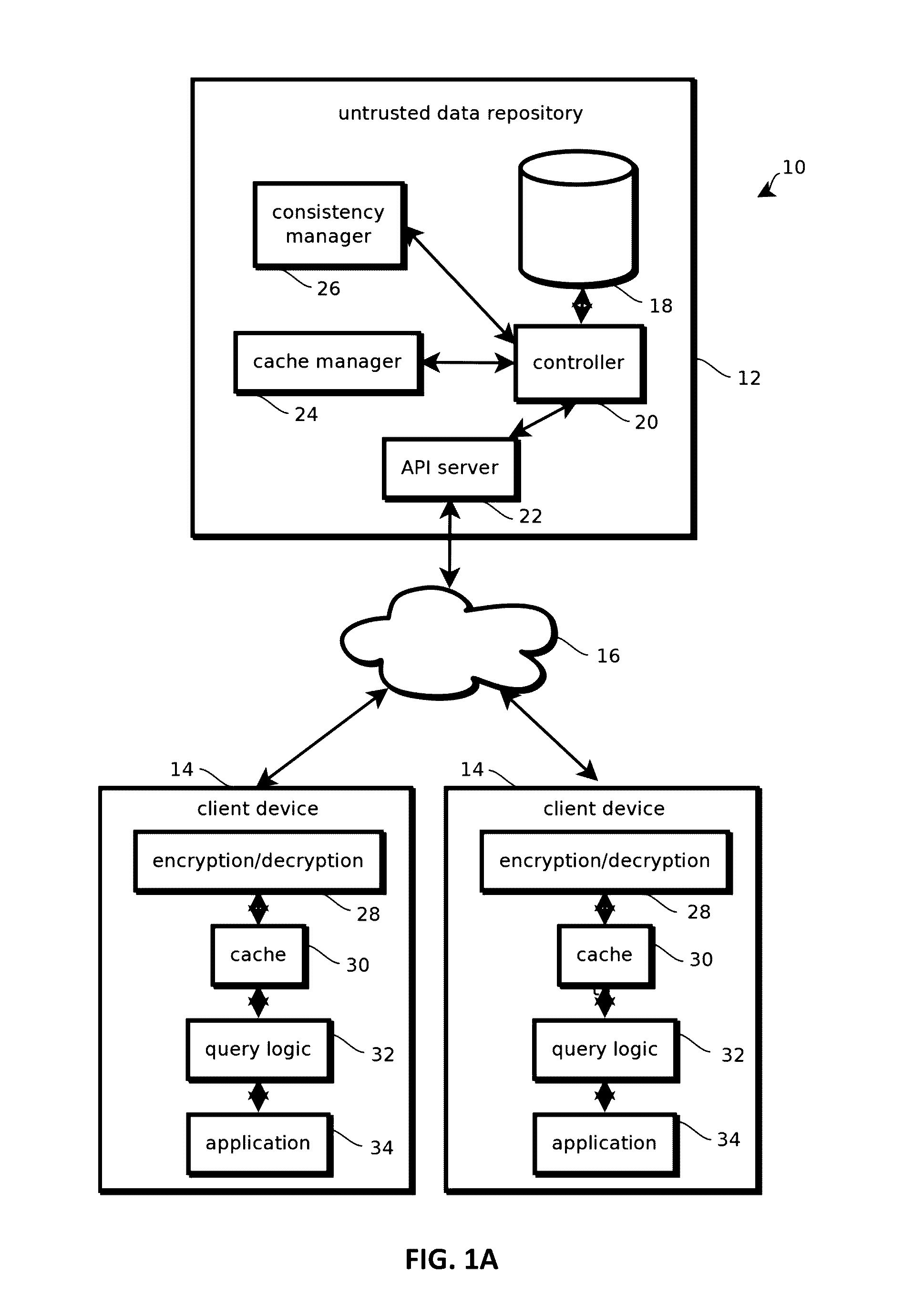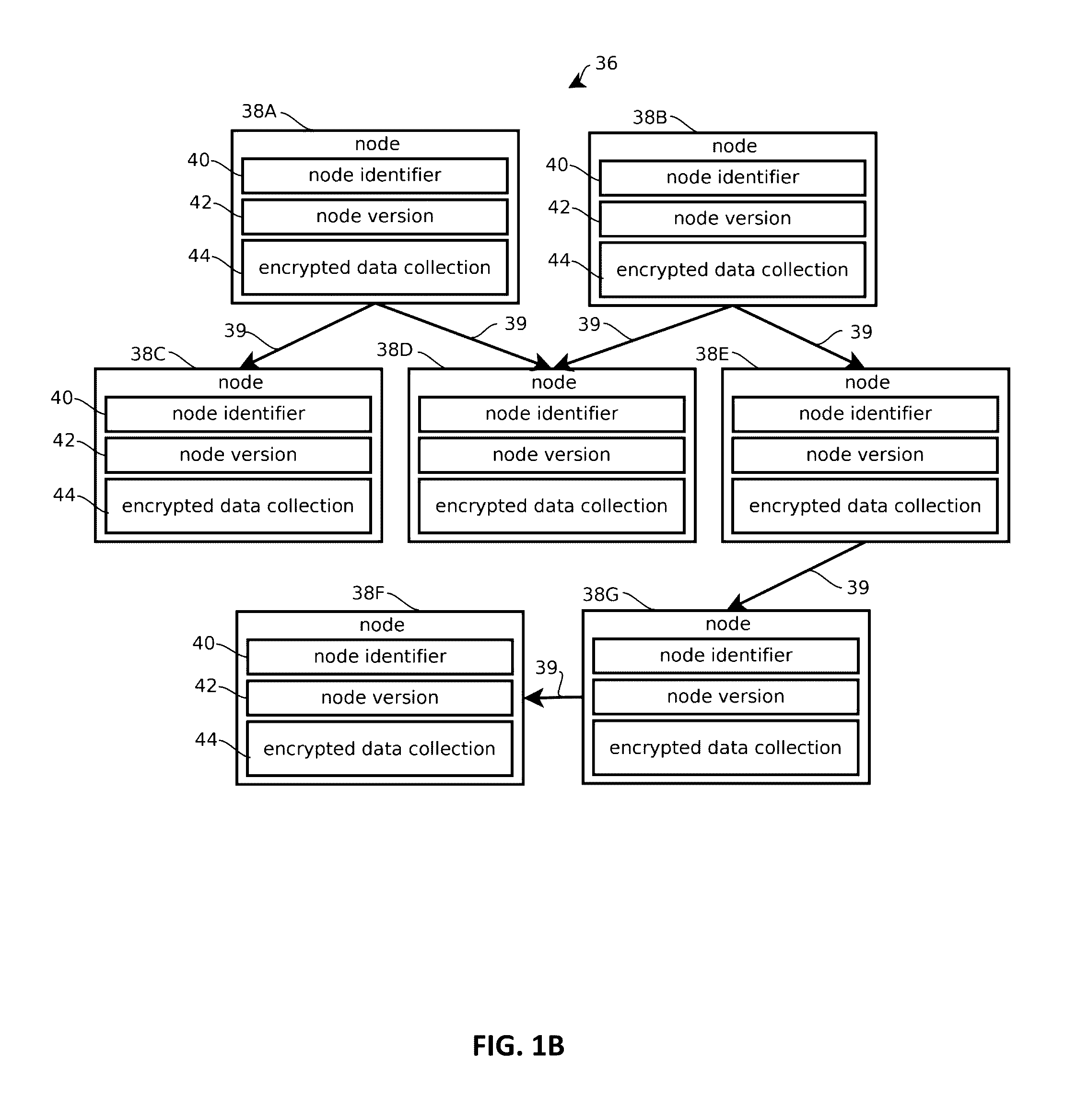Zero-knowledge databases
a database and zero-knowledge technology, applied in the field of encrypted databases, can solve the problems of weakening the underlying encryption, exposing too much information to the hosting entity, and unable to trust the database operators
- Summary
- Abstract
- Description
- Claims
- Application Information
AI Technical Summary
Benefits of technology
Problems solved by technology
Method used
Image
Examples
example 1
[0096]Clients access their private datasets and indexes individually; and
example 2
[0097]In some embodiments, clients access a Cloud Access Security Broker (CASB), which is located within the organization. The CASB server may access a storage server in the cloud or other remote location, which does not have to be trusted.
[0098]Example 1 is expected to be particularly relevant for consumer applications. In some embodiments, each consumer owns his data and encryption keys. Therefore, an attacker would need to obtain keys of all the consumers to compromise all the data, which is expected to be impractical.
[0099]Example 2 is more relevant to enterprises, which want to take advantage of cloud services, rather than storing everything on their own servers. This approach may support different kinds of security models within organizations (see e.g., FIGS. 4-7). It also facilitates the implementation of drop-in replacements for existing SQL and NoSQL database systems such as Oracle™, PostgreSQL™, MySQL™, MongoDB™, etc. In fact, the original database engine of such database ...
embodiment 1
2. The method of embodiment 1, wherein the first computing system includes a computing device storing the one or more decryption keys and operative to decrypt the encrypted collections of data stored in nodes of the graph stored by the untrusted computing system, and wherein the encrypted form is a nondeterministic form of encryption.
3. The method of any of embodiments 1-2, wherein the graph is an acyclic directed graph, and wherein a plurality of the connections between the nodes of the graph are not accessible to the untrusted computing system, at least in part, because the plurality of the connections are stored in the encrypted collections of data.
4. The method of any of embodiments 1-3, wherein the graph comprises a forest graph having a plurality of unconnected trees.
5. The method of any of embodiments 1-4, wherein the graph is a hierarchical arrangement of nodes, the arrangement comprising: a root node; children nodes having identifiers among the encrypted collection of data ...
PUM
 Login to View More
Login to View More Abstract
Description
Claims
Application Information
 Login to View More
Login to View More - R&D
- Intellectual Property
- Life Sciences
- Materials
- Tech Scout
- Unparalleled Data Quality
- Higher Quality Content
- 60% Fewer Hallucinations
Browse by: Latest US Patents, China's latest patents, Technical Efficacy Thesaurus, Application Domain, Technology Topic, Popular Technical Reports.
© 2025 PatSnap. All rights reserved.Legal|Privacy policy|Modern Slavery Act Transparency Statement|Sitemap|About US| Contact US: help@patsnap.com



